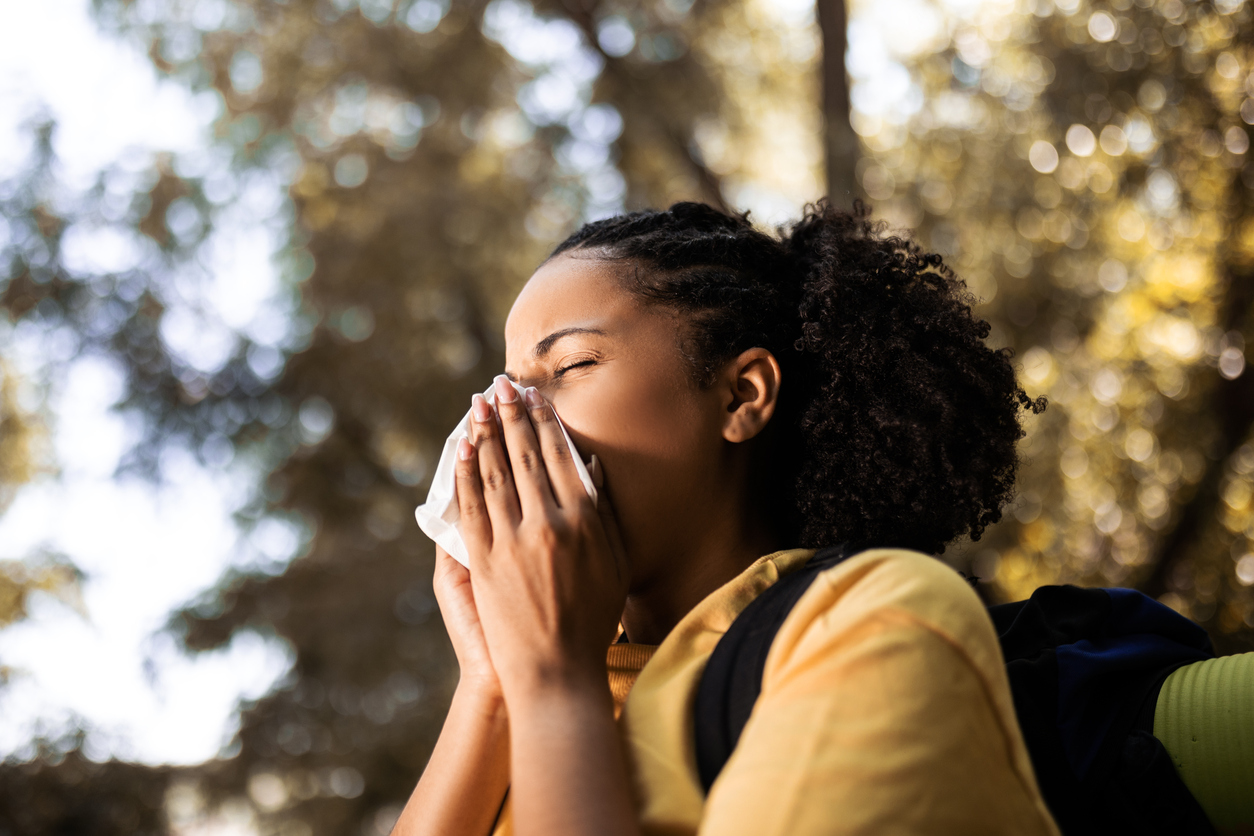Beat the Chill and the Sneeze: Managing Fall Seasonal Allergies

Fall is here! For many, that means cozy sweaters, pumpkin spice, and colorful foliage. But for allergy sufferers, the cooler months can bring a less welcome guest—seasonal allergies. These ‘fall sniffles’ can turn a perfect day into a sneeze-fest. But don’t worry! Whether you’re sneezing, itching or tearing up, this guide has you covered. Let’s explore how to manage those pesky allergies so you can enjoy the fall to the fullest.
Understanding Fall Allergies
Seasonal allergies, also known as allergic rhinitis or hay fever, occur when your immune system overreacts to allergens like pollen, mold spores and dust mites. Unlike summer allergies, fall sniffles are often triggered by airborne particles that are more prevalent during the cooler months.
Common Fall Culprits
The main culprits behind fall allergies include ragweed, mold and dust mites. Ragweed pollen peaks during the late summer and early fall, while mold thrives in damp, decaying leaves and indoor areas. Dust mites, which can be found in your home year-round, often become more problematic when you start using your heating system.
Symptoms to Watch For
Symptoms of fall allergies can range from mild to severe and may include sneezing, runny or stuffy nose, itchy eyes, throat or ears and watery eyes. For some, symptoms can mimic those of a cold, making it crucial to identify the cause to manage it effectively.
Prevention is Better Than Cure
Check the Pollen Count: Before heading out, check the daily pollen count using apps or websites dedicated to tracking allergens. Staying indoors on high-pollen days can significantly reduce your exposure.
Keep Windows Closed: While it might be tempting to open windows to enjoy a fall breeze, this can allow pollen and other allergens into your home. Use air conditioning instead to keep your home cool and allergen-free.
Shower and Change Clothes: After spending time outdoors, shower and change your clothes to remove pollen that may have settled on your skin and fabric. This simple step can prevent allergens from spreading inside your home.
Treatment Options
Over-the-Counter Medications: Antihistamines, decongestants and nasal sprays are commonly available over-the-counter and can provide quick relief from allergy symptoms. Brands like Claritin, Zyrtec and Flonase are popular choices.
Prescription Medications: For more severe allergies, your doctor may prescribe stronger medications or antihistamines.
Natural Remedies: Some people find relief through natural remedies like saline nasal rinses, local honey and herbal teas with ingredients like nettle and peppermint. Always consult your healthcare provider before trying new treatments.
Lifestyle Adjustments
Use an Air Purifier
Investing in a high-quality air purifier can help reduce indoor allergens like pollen, dust and pet dander. For best results look for purifiers with HEPA filters.
Maintain Cleanliness
Regular cleaning can minimize allergens in your home. Vacuum with a HEPA-filtered vacuum, wash bedding frequently and consider using allergen-proof mattress and pillow covers.
Stay Hydrated and Eat Well
Drinking plenty of water helps thin mucus, making it easier to expel. A balanced diet rich in anti-inflammatory foods like fruits, vegetables and omega-3 fatty acids can also help reduce allergic reactions.
Outdoor Activities and Allergies
Best Times to Go Outside
Early morning and late afternoon are generally the best times to go outside when pollen levels are lower. Avoid grassy areas and opt for less allergenic environments like the beach or city parks.
Protective Gear
Wearing sunglasses can protect your eyes from pollen. Wearing a wide-brimmed hat can prevent pollen from settling in your hair. Face masks can also limit your exposure to airborne allergens, especially on high-pollen days.
Post-Activity Routine
After outdoor activities, follow a strict routine of showering and changing clothes to keep allergens at bay. Don’t forget to clean your pets if they’ve been outside, as pollen can cling to their fur.
When to See a Doctor
If over-the-counter treatments aren’t providing relief, it might be time to see a doctor. An allergist can perform tests to identify specific allergens and recommend targeted treatments both of which are offered at NAENTA.
Allergy Shots (Immunotherapy)
For long-term relief, allergy shots can be an effective option. These injections gradually desensitize your immune system to specific allergens, reducing the severity of your reactions over time.
Sublingual Therapy For Immunotherapy
At North Atlanta ENT & Allergy, we offer sublingual therapy as an effective immunotherapy option for managing fall seasonal allergies. Sublingual therapy involves placing small doses of allergen extracts under the tongue, which helps to gradually build up your body’s tolerance to allergens such as pollen, mold and dust mites. This method is a convenient and needle-free alternative to traditional allergy shots, making it an ideal choice for those who prefer a more comfortable and hassle-free treatment. By targeting the root cause of your allergies, sublingual therapy can significantly reduce symptoms and improve your quality of life during the challenging fall allergy season. Our experienced team is dedicated to providing personalized care to help you breathe easier and enjoy the season to its fullest.
Advanced Patient Care
Managing fall allergies doesn’t have to be a daunting task. With the right strategies and treatments, you can enjoy the cooler months without the constant sneezing and itching. Remember, prevention is key, and staying informed will help you make the best choices for your health.
If you’re struggling to manage your allergies, consider booking a consultation with North Atlanta ENT & Allergy to create a personalized plan. Here’s to a sneeze-free fall!








 Make an Appointment
Make an Appointment